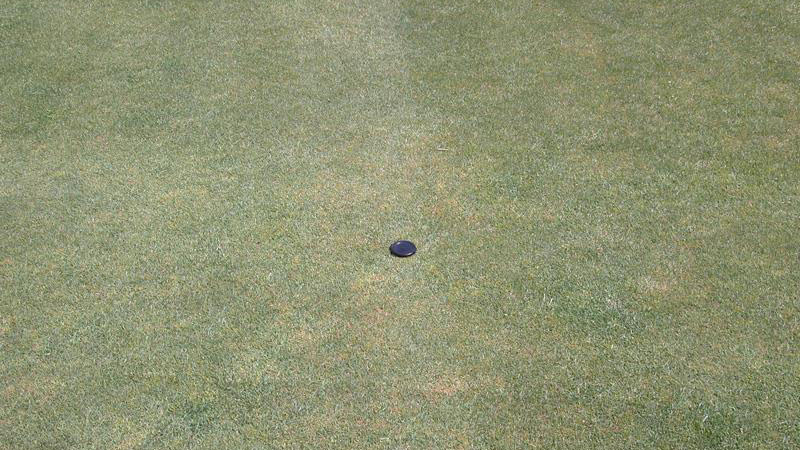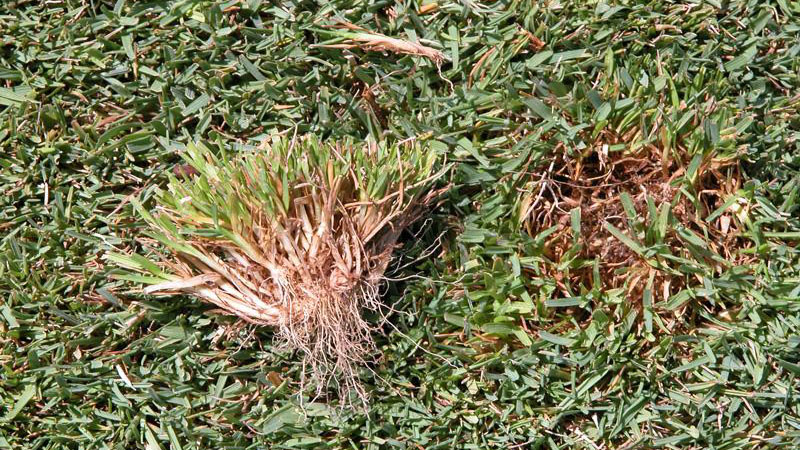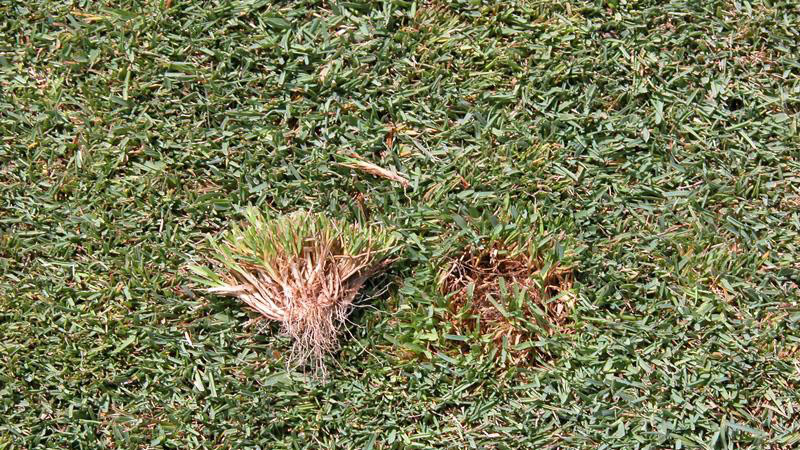Yellow Tuft in Turf
en Español / em Português
El inglés es el idioma de control de esta página. En la medida en que haya algún conflicto entre la traducción al inglés y la traducción, el inglés prevalece.
Al hacer clic en el enlace de traducción se activa un servicio de traducción gratuito para convertir la página al español. Al igual que con cualquier traducción por Internet, la conversión no es sensible al contexto y puede que no traduzca el texto en su significado original. NC State Extension no garantiza la exactitud del texto traducido. Por favor, tenga en cuenta que algunas aplicaciones y/o servicios pueden no funcionar como se espera cuando se traducen.
Português
Inglês é o idioma de controle desta página. Na medida que haja algum conflito entre o texto original em Inglês e a tradução, o Inglês prevalece.
Ao clicar no link de tradução, um serviço gratuito de tradução será ativado para converter a página para o Português. Como em qualquer tradução pela internet, a conversão não é sensivel ao contexto e pode não ocorrer a tradução para o significado orginal. O serviço de Extensão da Carolina do Norte (NC State Extension) não garante a exatidão do texto traduzido. Por favor, observe que algumas funções ou serviços podem não funcionar como esperado após a tradução.
English
English is the controlling language of this page. To the extent there is any conflict between the English text and the translation, English controls.
Clicking on the translation link activates a free translation service to convert the page to Spanish. As with any Internet translation, the conversion is not context-sensitive and may not translate the text to its original meaning. NC State Extension does not guarantee the accuracy of the translated text. Please note that some applications and/or services may not function as expected when translated.
Collapse ▲Symptoms
Yellow tuft, or downy mildew, is caused by the water mold fungus Sclerophthora macrospora. The disease occurs on most turfgrass species, but is most common in creeping bentgrass or annual bluegrass putting greens. The disease is most damaging in areas that are poorly drained, over-irrigated, or have excessive thatch accumulations. Symptoms of yellow tuft appear in small, yellow spots that are scattered across the turf stand. On occasion, the spots may appear to follow drainage patterns. Closer examination reveals that the yellow spots are slightly raised above the turf canopy. The affected plants will pull easily from the turf to reveal dense clusters of yellowed tillers emanating from a single crown. This profuse tillering is referred to as a “witches’ broom” symptom, and is caused by production of hormones by the pathogen in the crown of infected plants.
Development Factors
The yellow tuft pathogen is active during periods of cool, wet weather. The disease is most common in wet, poorly drained areas or where excessive irrigation is applied. The disease may occur in well-drained areas following periods of frequent rainfall.
Cultural Control
Ensuring adequate surface and subsurface drainage is the most effective way to prevent yellow tuft problems. When constructing new turf areas, avoid establishing turf in low lying areas that will collect water and remain saturated for extended periods. If necessary, install subsurface drainage to carry water away from wet areas. Cultivate and topdress on a regular basis to reduce compaction, minimize thatch accumulation, and encourage rapid drainage.
Chemical Control
Fungicides containing mefenoxam and metalaxyl are known to be very effective against yellow tuft. The effectiveness of other products is not well known. Curative control of yellow tuft is difficult, so a preventative fungicide program should be implemented in areas where the disease has been a persistent problem. Make applications on a 14 to 21-day interval during cool, wet conditions that are conducive to yellow tuft development.
* Products marked with an asterisk are not labeled for home lawn use.
| Fungicide and Formulation1 | Amount of Formulation2 | Application Interval (Days)3 | Efficacy Rating | Resistance Risk | FRAC Code4 |
| fosetyl Al (Signature) (Signature Xtra Stressgard)* |
4 to 8 2 to 6 |
14 to 21 7 to 21 |
+ | Low | 33 |
| mefenoxam (Subdue Maxx) (Subdue GR) |
0.5 to 1 12.5 to 25 |
10 to 21 10 to 14 |
+++ | Medium | 4 |
| mefentrifluconazole + pyraclostrobin (Navicon)* | 0.7 to 0.87 | 14 to 28 | ? | ? | 3/11 |
| 1 Other trade names with the same active ingredients are labeled for use on turfgrasses and can be used according to label directions. 2 Units are oz, fl oz, or lb depending on formulation. Apply fungicides in 2 to 5 gallons of water per 1,000 square feet according to label directions. Use lower rates for preventive and higher rates for curative applications. 3 Use shorter intervals when conditions are very favorable for disease. 4 Fungicide Resistance Action Committee code. Products with same code have the same mode of action and are in the same chemical class. * Products marked with an asterisk are not labeled for home lawn use. |
|||||
| Efficacy Rating ++++ = excellent control when conditions are highly favorable for disease development +++ = good control when disease pressure is high, excellent control when disease pressure is moderate ++ = good control when disease pressure is moderate, excellent control when disease pressure is low + = good control when disease pressure is low ? = not rated due to insufficient data |
|||||
| Resistance Risk Low = Rotate to different chemical class after 3-4 applications; tank mixing not necessary Medium = Rotate to different chemical class after 1-2 applications; tank-mixing with low or medium risk product recommended High = Rotate to different chemical class after EVERY application; tank-mix with low or medium risk product for EVERY application ? = not rated due to insufficient data |
|||||






